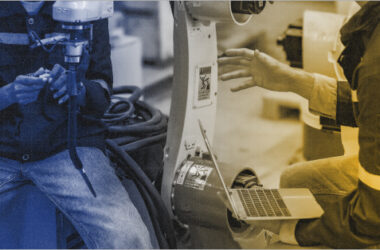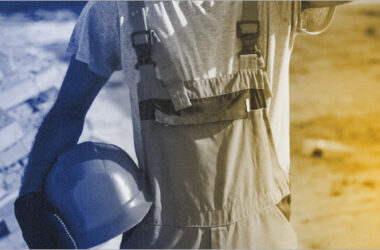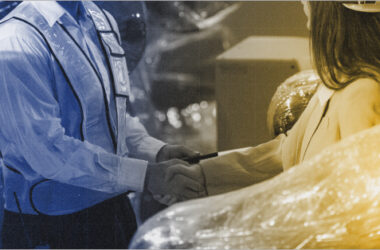Construction projects are complex endeavors that involve numerous stakeholders, extensive planning, and substantial financial investments. Given the inherent risks associated with construction projects, stakeholders must mitigate potential liabilities through insurance policies tailored to the industry’s unique needs. Two commonly utilized insurance policies in the construction sector are Contractor’s All Risk (CAR) and Erection All Risk (EAR) Policies. While both aim to provide coverage for construction-related risks, they differ significantly in their scope, coverage, and applicability. Understanding the distinctions between CAR and ear insurance policies is essential for construction professionals to ensure adequate protection against potential losses.
Before looking into the differences between a CAR policy and ear insurance policy, let’s have a brief idea about them.
A. Contractor’s All Risk (CAR) Policy:
A Contractor’s All Risk policy is a comprehensive insurance policy designed to provide coverage for all risks associated with construction projects. CAR policies are typically procured by contractors, builders, and construction firms to protect against various perils that may arise during the construction process. These policies offer coverage for both property damage and third-party liabilities, providing a broad spectrum of protection.
Key features of a CAR policy include:
1. Comprehensive Coverage: CAR policies typically cover a wide range of risks, including but not limited to, fire, theft, vandalism, natural disasters, construction defects, and damage to third-party property. This broad coverage ensures that the insured party is protected against most unforeseen events that could occur during the construction project.
2. Property Damage Coverage: CAR policies provide coverage for damage to the physical structure being constructed. This includes materials, machinery, equipment and temporary structures on the construction site. This coverage extends to both accidental damage and damage resulting from external perils.
3. Third-Party Liability Coverage: In addition to property damage, CAR policies also offer protection against third-party liabilities. This includes coverage for bodily injury or property damage caused to third parties (such as neighbouring properties or individuals) as a result of the construction activities.
4. Flexibility: CAR policies are often customizable to suit the specific needs of the project and the insured party. This flexibility allows contractors to tailor coverage limits, deductibles, and additional endorsements based on the unique requirements of each construction project.
5. Single Project Basis: CAR policies are typically issued on a project-specific basis, covering the duration of a particular construction project from commencement to completion. Once the project is completed, the policy expires, and coverage ceases unless renewed or extended.
B. Erection All Risk (EAR) Insurance Policy:
Erection all risk insurance is a specialized type of insurance policy specifically tailored to cover the risks associated with the erection, installation, and testing of machinery, plant and equipment. EAR policies are commonly procured for projects involving the installation of industrial equipment, such as power plants, manufacturing facilities and infrastructure projects.
Key features of an EAR Insurance Policy include:
1. Focus on Installation Risks: EAR policies focus primarily on the risks associated with the erection and installation of machinery, plant, or equipment. This includes risks such as transit damage, assembly errors, faulty installation and damage during testing and commissioning.
2. Coverage for Machinery and Equipment: EAR policies provide coverage for the machinery, plant, or equipment being installed or erected. This also includes any components, parts, or accessories necessary for the operation of the machinery. This coverage extends to both damage to the insured property and third-party liability arising from its use or installation.
3. Transit Coverage: EAR policies often include coverage for damage occurring during the transit of machinery or equipment from the manufacturer’s premises to the construction site. This ensures that the insured party is protected against risks during transportation, including accidents, theft, or damage in transit.
4. Testing and Commissioning Coverage: EAR policies typically extend coverage to include risks associated with the testing, commissioning, and trial run of the installed machinery or equipment. This includes coverage for any damage or loss incurred during the testing phase, ensuring that the insured party is protected until the project is fully operational.
5. Project-Specific Coverage: erection all risk insurance can be issued on a project-specific basis, covering the duration of the erection or installation project. Once the project is completed and the machinery or equipment is operational, the policy expires, and coverage ceases unless renewed or extended.
Key Differences between CAR and EAR Insurance Policies
While both CAR and EAR policies provide coverage for construction-related risks, several key differences set them apart:
- Scope of Coverage: CAR policies offer comprehensive coverage for all risks associated with construction projects, including property damage and third-party liabilities. In contrast, erection all risk policies focus specifically on the risks associated with the erection, installation, and testing of machinery, plant, or equipment.
- Nature of Insured Property: CAR policies cover the physical structure being constructed, including materials, machinery, equipment, and temporary structures. On the other hand, erection all risk policies primarily cover machinery, plant, or equipment being installed or erected, along with related components and accessories.
- Project Focus: CAR policies are suitable for a wide range of construction projects, including buildings, infrastructure, and civil engineering works. EAR policies, however, are tailored specifically for projects involving the installation of industrial machinery, such as power plants, manufacturing facilities, and specialized infrastructure projects.
- Risk Factors: The risks covered under CAR policies typically include construction-related perils such as fire, theft, vandalism, and natural disasters. In contrast, EAR policies focus on risks associated with the installation process, including transit damage, assembly errors, faulty installation, and damage during testing and commissioning.
- Coverage Duration: Both CAR and EAR policies are issued on a project-specific basis, covering the duration of the construction or installation project. However, the specific duration may vary depending on the project timeline and requirements.
Conclusion:
In conclusion, Contractor’s All Risk and erection all risk insurance policies play vital roles in mitigating risks associated with construction projects. While CAR policies offer comprehensive coverage for all construction-related risks, EAR insurance policies are specialized insurance solutions tailored specifically for the erection, installation, and testing of machinery, plant, or equipment. Understanding the distinctions between these two types of policies is essential for construction professionals to ensure adequate protection against potential losses. By selecting the appropriate insurance coverage based on the nature of the project and associated risks, stakeholders can effectively manage risk and safeguard their investments in construction projects.
FAQs
Can businesses customize their CAR policy to fit their specific needs?
Yes, businesses can customize their CAR policy to suit their specific needs and the unique requirements of their construction projects. This customization may include adjusting coverage limits, modifying deductibles, adding endorsements for specialized risks, and tailoring the policy duration to match the project timeline. By working closely with insurers and brokers, businesses can design a CAR policy that provides comprehensive coverage. Thus, they can address specific concerns and risk exposures associated with their construction activities.
Why is an EAR policy important for businesses?
An EAR policy is crucial for businesses involved in the installation of machinery, plant, or equipment. It provides comprehensive coverage against risks inherent in the erection process, such as transit damage, assembly errors, faulty installation, and damage during testing and commissioning. By securing an EAR policy, businesses can protect their investments, minimize financial losses, and ensure continuity of operations. This is even more important for industries reliant on specialized equipment and infrastructure. This insurance coverage provides peace of mind to businesses, allowing them to focus on their core activities without worrying about potential risks during the installation phase.
How do insurance companies determine the cost of a CAR policy?
Insurance companies determine the cost of a CAR policy based on several factors. This may include the size and complexity of the construction project, the type of construction, location, duration, past claim history of the insured party and the coverage limits desired. Additionally, insurers assess the risk profile of the project, considering factors such as the construction materials used, the project’s exposure to natural disasters or other perils, and the contractor’s experience and track record. Premiums are then calculated to reflect the level of risk involved, with higher-risk projects typically commanding higher premiums.








